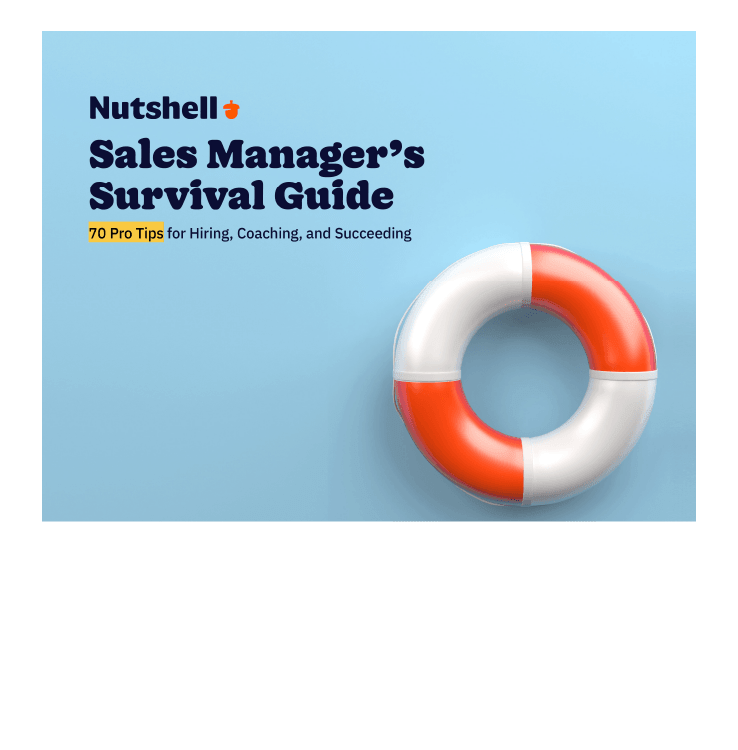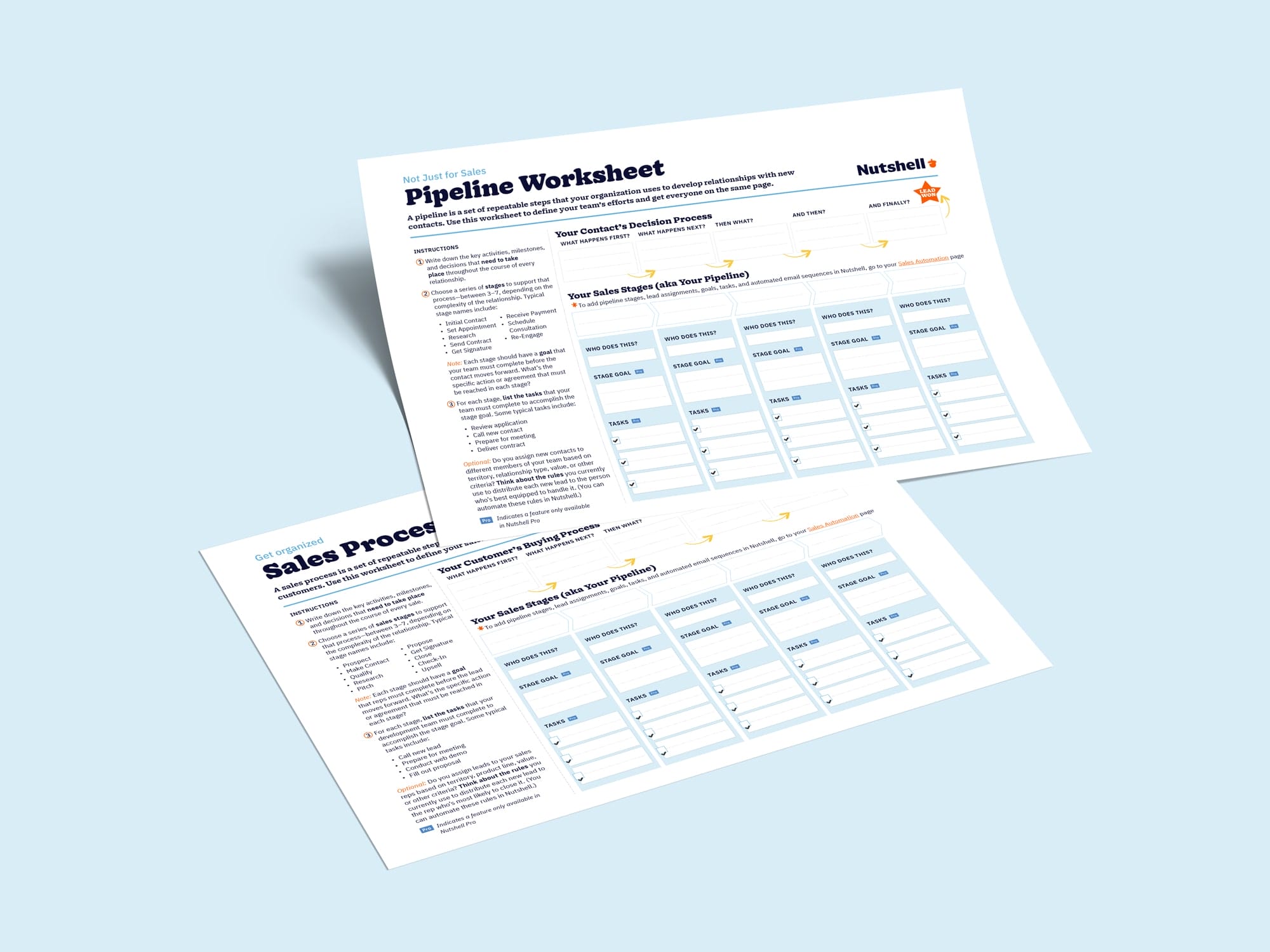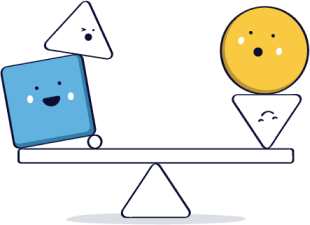
As the backbone of any business, the sales team needs to be efficient to meet targets and ensure the company remains profitable. Keeping an eye on your team’s sales productivity is one of the best ways to track performance and nip bottlenecks in the bud.
When you can pinpoint dips in productivity and identify the elements that contribute to slower workflows, you can make the changes needed to support your sales team. An improvement in productivity translates to more deals closed and more revenue for your business, which means productivity directly impacts your bottom line.
This article puts the spotlight on what sales productivity means, why it’s crucial, and strategies you can employ to take your team’s productivity from 0 to 100 fast. We’ll also explore some of the challenges sales reps face that impact their productivity, detail how to calculate your team’s sales productivity, and discuss the best tools to help you increase it.
Need a reliable CRM to take your sales productivity to new heights? Register for a live Nutshell demo to see what a world-class CRM can do for your sales team.
Sales productivity is a measure of how productive your sales team is. It boils down to two core elements: efficiency and efficacy. It also relates to how well your sales team and related teams employ the time and resources available to achieve sales goals.
When teams waste time and money, their productivity suffers. Improving productivity is about getting the most out of your team while efficiently using time, resources, and budget. A more productive team leads to more deals, revenue, and growth.
Get 70+ expert strategies for sales management success in our Sales Manager’s Survival Guide.

Apart from the obvious benefit of additional revenue, improving your sales productivity can have several significant positive effects on your business, such as:
Perhaps you’re still wondering whether all this talk of improved productivity is worth your time. Let’s consider the alternative. The following serves as a peek into the challenges typical sales teams face today that hinder their productivity.
In this day and age, sales teams must contend with both the physical and online worlds, which introduces many customer touchpoints for most companies. As a result, queries and leads can come in through various channels, and without sound systems in place to organize prospect information and tasks, opportunities can fall through the cracks.
With everything you could possibly want to know available online, it’s easier than ever for customers and prospects to educate themselves about a product or service. The need for sales reps to equip themselves with advanced technical knowledge regarding their industry and offerings is now crucial to success.
Because sales teams play such a critical role in any company, there are numerous business-related applications and systems aimed at improving sales, lead generation, and customer data management. In fact, technology is evolving at such a rapid pace that many sales teams struggle to keep up with the changes.
Without standardized sales processes, sales reps lead with their preferred techniques, which can prove challenging. These techniques could differ vastly from one rep to the next, making managing interactions and buyer journeys tricky.
Our internet-centric society has shifted a significant portion of decision-making to the online environment. Sales teams have adapted to this, spending far more time interacting with prospects and customers via online channels. The result is that sales reps spend more time doing administrative-type work when conversing with customers and less time managing leads and pipelines.
DOWNLOAD
Download our Sales Process Worksheet to learn how to outline the key steps your team needs to take for sales success.

When it comes to measuring sales productivity, most businesses look at quantitative metrics, such as:
However, there are more metrics that teams should consider to give them a holistic view of the status quo. Numbers can only tell you so much. Analyzing the qualitative metrics related to sales rep productivity gives you insight into sales team soft and hard skills that also have an impact on your sales process efficiency and efficacy.
Here are some of the core quantitative metrics you should measure to determine how productive your sales team is.
Sales productivity is about more than just data. Your sales rep’s abilities, customer relationships, and overall approach to sales play a vital role, too. These are some of the more qualitative metrics you should keep track of when measuring sales productivity:
Increasing sales team productivity requires implementing new systems in different areas to support an efficient and structured sales process.
Training is an essential part of growth as a sales professional, and your team should receive regular training to help them deliver the results you desire.
Consider both third-party courses and regular internal training covering topics like sales techniques, product knowledge, understanding your sales process, and learning how to take advantage of new technologies.
Streamline your sales process by investing in software that lets you automate administrative non-selling tasks. This will save your sales team members heaps of time and allow them to focus on moving leads through the pipeline or engaging with existing customers for upsells and cross-sells.
Keep team morale high through inter-team competitions and incentives. Rewarding your team members for completing tasks that improve sales productivity is an ideal way to keep them motivated and reinforce the process you’ve put in place.
It may also be a good idea to use stand-out achievements as examples for other team members and allow those who excel to teach those who may find things more challenging.
While sales and marketing departments often operate in silos, they’re actually working toward the same goal, namely lead generation and conversions. That’s why it makes a whole lot more sense for sales and marketing teams to work as one to improve sales productivity.
Sales and marketing teams should meet regularly and have shared goals geared toward increasing deals and revenue. They should also all have easy access to the same data on a shared platform and the ability to communicate with each other seamlessly throughout the workday.
Sharing sales data with the marketing team, and vice versa, ensures these teams have access to identical and accurate information for analyzing and strategizing. But it’s just as crucial for other departments in your organization to access this data, too.
The ideal solution is using powerful customer relationship management (CRM) software to organize and manage your customer data. When every department in your organization can access this central database, you pave the way for enhanced customer experiences at every company touch point.
Drawing up a playbook or similar document is one way to put your sales process on paper, so to speak. But, capturing your process within your CRM through custom pipelines comprising well-considered stages and integral tasks is the perfect way to get new sales team members into the flow of things.
A sales pipeline designed to follow your specific and preferred sales cycle makes for a smoother onboarding process. It also ensures that existing team members stick to the script, following your tried, tested, and constantly updated process for optimal sales productivity.
The sales process is an ever-evolving animal susceptible to change through both internal and external elements. For this reason, you should measure your team’s quantitative and qualitative sales metrics weekly or monthly to ensure your system is still effective for your team.
You should also exercise a quarterly sales productivity audit to determine whether you need to make any major sales process changes. Constant measurement, assessment, and adaptation are necessary to ensure your team’s productivity remains at its best.
The Sell to Win Playbook collects 55 of the best expert sales tips we’ve ever published. Download it today!

Proper data organization, team collaboration, measurement and analysis, and structuring and restructuring sales processes will all aid in inching you closer to your sales productivity goals. However, embracing the technology available to support and uplift sales teams will help you meet and exceed those objectives.
There’s a reason CRM software is at the top of this list. CRM systems can help your sales team boost productivity in several ways.
Typically, modern CRMs are so robust that they can help you with everything from capturing leads to managing customer data, streamlining tasks, customizing processes, moving leads through the pipeline, forecasting, and more.
That’s why a good CRM is essential for any sales team, especially those who want to improve their productivity and ensure a great customer experience.
Nutshell is an industry-leading CRM packed with all the features you need to empower your sales team and increase their productivity and profitability.
Many automation tools exist to automate repetitive tasks, helping individuals save time. And plenty of automation tools are on the market, specifically designed to assist sales reps with non-selling tasks. In fact, a quality CRM will include many of the automation options your sales team might require.
These tools can automate a broad spectrum of tasks, including lead advancement within the pipeline, drawing up reports, sending prospecting emails, and assigning leads, tasks, and activities. Using an automation tool ensures teams complete specific non-selling tasks and gives them more time to focus on qualifying and engaging with leads and customers.
Nutshell’s CRM allows you to automate a host of sales tasks, making it easier to better your team’s efficiency and overall productivity.
Advancements in technology have introduced sales intelligence software and platforms into the industry. This software crawls the internet, gathering information that fills the gaps in your customer and prospect data and equips sales teams with the information they need to lift their game.
Some of the information you can expect these sales intelligence tools to capture includes company information, job titles, contact details, social media activity, and more.
Choosing a leading CRM like Nutshell will give you access to a powerful sales intelligence tool baked into the system. Our system also includes a competitor intelligence tool that gives you inside information on what your competitors are up to.
Don’t waste another moment dealing with subpar sales figures and inefficient sales processes. Bring an affordable, top-tier CRM into the mix to boost your sales team’s productivity and your company’s bottom line.
It’s no accident that Nutshell is one of the top CRMs on the market and is listed on G2’s top 10 CRM software list. As an all-in-one CRM, Nutshell delivers everything sales, marketing, and customer success teams need to ensure cohesive service delivery in the most productive manner possible.
Experience Nutshell’s extraordinary features for yourself by signing up for a no-obligation, free 14-day trial (no credit card required). Kick the tires and discover why thousands of businesses worldwide choose Nutshell to increase sales productivity and much more.
Not ready for a trial yet? Sit in on one of our free 30-minute live demos, where you’ll see Nutshell in action and have the opportunity to ask questions. You can also explore our pre-recorded webinars and guided tours to see Nutshell features in use at your own pace.
Give our powerful, easy-to-use CRM a try for free for 14 days! Or join a live demo to see Nutshell at work!

Join 30,000+ other sales and marketing professionals. Subscribe to our Sell to Win newsletter!
 Email & Calendar Sync
Email & Calendar Sync




Nutshell is easy to use with enterprise level features and no hidden fees.
See for yourself!